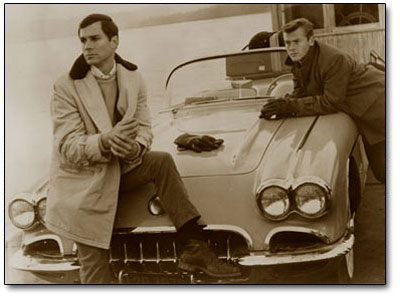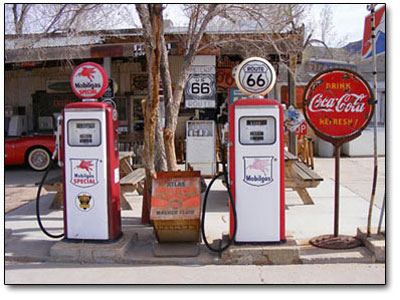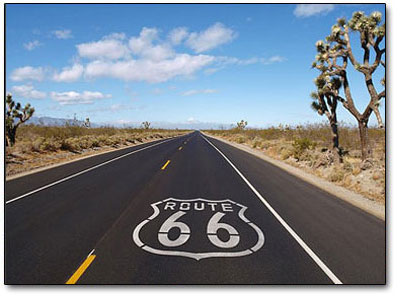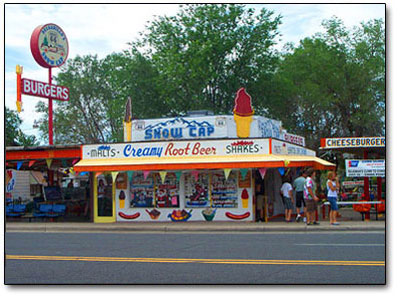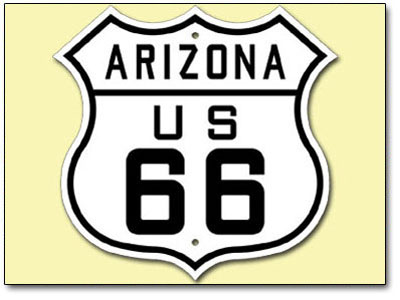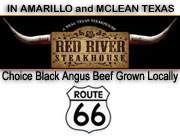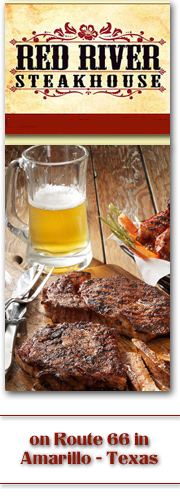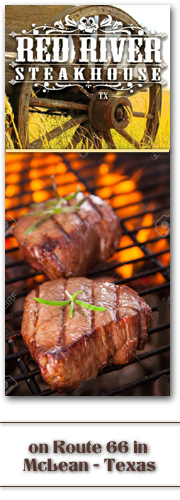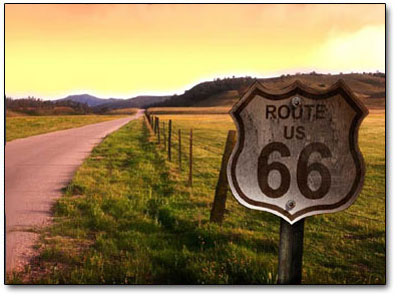
The highway known as U.S. Route 66 has also been known as the Will Rogers Highway and the Mother Road. This famous highway is just a stones throw from the front door of the Red River Steakhouse, in McLean, Texas. One of the original U.S. Highways, Route 66 was established on November 11, 1926 with road signs erected the following year. The highway, which became one of the most famous roads in America and eventually worldwide, ran originally from Chicago through the states of Missouri, Kansas, Oklahoma, Texas, New Mexico, Arizona, and California, before ending in Los Angeles after covering a total of 2,448 miles or 3,940 kilometers.

